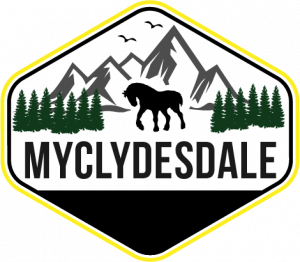Introduction
Are you looking to learn more about western dressage, the art of horse dressage? If so, you’ve come to the right place. In the previous blog we looked at Western vs English Dressage , In this blog post, we’ll provide an introduction to Western-style dressage, covering the basics of this classic style of riding. We’ll explain what it is, why it’s beneficial, and how you can get started on your journey of mastering Western dressage. So, if you’re interested in learning more about this popular style of riding, read on!
, In this blog post, we’ll provide an introduction to Western-style dressage, covering the basics of this classic style of riding. We’ll explain what it is, why it’s beneficial, and how you can get started on your journey of mastering Western dressage. So, if you’re interested in learning more about this popular style of riding, read on!
What is Western Dressage?
Western dressage is a unique style of riding that combines the principles of traditional dressage with the Western riding tradition. It focuses on developing a balanced, responsive, and willing horse through precise and controlled movements. Unlike traditional dressage, which is often associated with English riding, Western is specifically designed for Western-style riders and horses.
Riders perform a series of predetermined movements and patterns that demonstrate the horse’s suppleness, impulsion, and collection. These movements can include various transitions, circles, turns, and lateral movements. The goal is to achieve harmony between the horse and the rider, with the horse responding willingly and accurately to the rider’s cues.
One of the distinguishing features of Western dressage is the attire and tack used. Riders typically wear Western-style clothing, such as cowboy boots, jeans, and a Western-style hat or helmet. The tack used may include a Western-style saddle, which is often equipped with a horn and saddle rigging for extra stability and security.
Western-style dressage is gaining popularity among riders of all levels and disciplines. It offers a fun and challenging way to enhance the partnership between horse and rider, while also improving the horse’s balance, flexibility, and responsiveness. Whether you’re a beginner or an experienced rider, Western dressage can provide a rewarding and fulfilling experience.
If you’re interested in learning more about Western dressage, there are resources available such as clinics, training programs, and associations like the Western Dressage Association. These organizations provide education, training, and opportunities to compete in dressage. With dedication and practice, you can embark on a journey to becoming a skilled and accomplished Western dressage rider.
The History of Western Dressage
The history dates back to the early 1990s when it emerged as a new discipline within the equestrian world. It was born out of a desire to blend the artistry and precision of classical dressage with the Western riding style and traditions. While the roots of dressage can be traced back to ancient Greece, the concept of Western dressage is a relatively recent development.
One of the key figures in the establishment as a recognized discipline is Paula Paglia. Paula, a successful dressage trainer, and competitor, saw the potential to bring the principles of classical dressage to the Western riding community. She began hosting clinics and offering training programs specifically tailored to Western-style riders and horses.
Over the years, it has gained momentum and popularity among riders of all levels and disciplines. The Western Dressage Association (WDAA) , founded in 2010, has played a significant role in promoting and developing the discipline. The WDAA has established a set of rules and guidelines for Western dressage competitions and offers educational resources and opportunities for riders to showcase their skills.
, founded in 2010, has played a significant role in promoting and developing the discipline. The WDAA has established a set of rules and guidelines for Western dressage competitions and offers educational resources and opportunities for riders to showcase their skills.
Today, it continues to grow as more riders discover the benefits of incorporating dressage principles into their Western riding practices. It offers a unique and exciting way to enhance the partnership between horse and rider, while also improving balance, flexibility, and responsiveness. Whether you’re a seasoned competitor or a beginner, this style of dressage provides an avenue for growth, learning, and enjoyment.
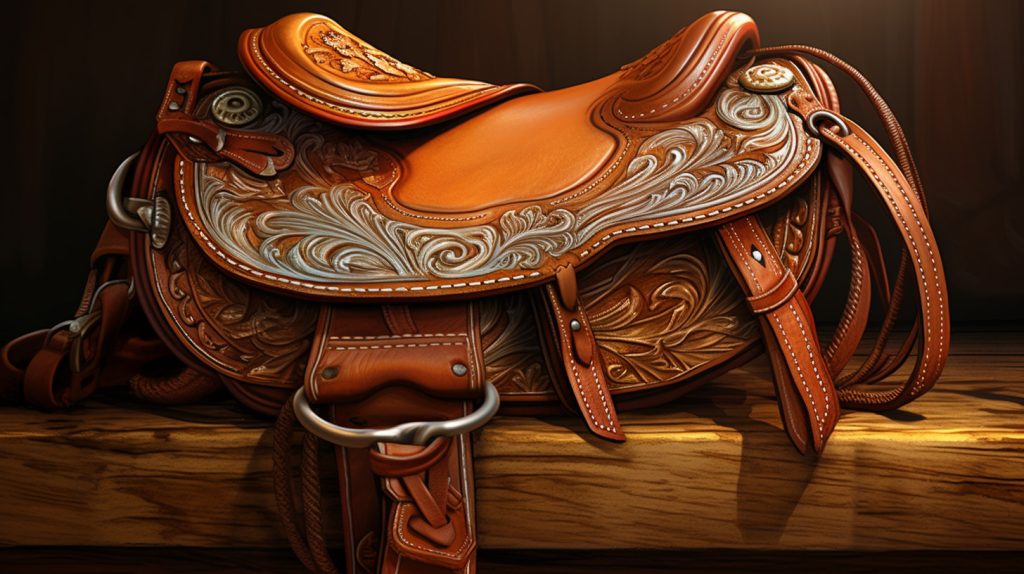
Western-Style Dressage Tack
When it comes to the art of dressage, the right tack is essential for both the rider and the horse. The tack used in Western dressage differs from traditional English dressage tack in both style and function.
One important piece of tack is the Western dressage saddle. These saddles are designed with a larger seat and a deep pocket, providing the rider with security and stability during movements. They often feature a horn and saddle rigging, which provides additional support and security when performing more advanced maneuvers.
Another important piece of tack is the bridle. Riders typically use a Western-style bridle, which includes a headstall, bit, and reins. The bit used is typically a mild and simple design, such as a snaffle or a curb bit, depending on the horse’s level of training and responsiveness.
In addition to the saddle and bridle, riders may also use specific accessories, such as leg protection for the horse, like splint boots or polo wraps. These provide support and protection during movements and help prevent injury.
It’s important to choose tack that fits both the rider and the horse comfortably. Ill-fitting tack can cause discomfort and hinder the horse’s movement and performance. It’s recommended to consult with a professional or experienced Western dressage rider when selecting tack to ensure proper fit and functionality.
In summary, Western style dressage tack includes a specifically designed saddle, a Western-style bridle, and optional accessories like leg protection. Investing in high-quality and properly fitting tack will contribute to the success and comfort of both the rider and the horse during their Western dressage journey.
The Importance Training and Equipment
When it comes to training and equipment, there are several key aspects to consider. First and foremost, finding a knowledgeable and experienced trainer is crucial. Working with a trainer who specializes in this discipline can help you learn the correct techniques and develop a solid foundation.
In terms of equipment, having the right western tack is essential. As mentioned earlier, a Western dressage saddle is designed specifically for this style of riding. It provides the rider with security and stability during movements, with features such as a larger seat and a deep pocket. Additionally, the saddle may have a horn and saddle rigging for extra support.
is essential. As mentioned earlier, a Western dressage saddle is designed specifically for this style of riding. It provides the rider with security and stability during movements, with features such as a larger seat and a deep pocket. Additionally, the saddle may have a horn and saddle rigging for extra support.
In terms of training, it’s important to start with basic exercises and gradually progress to more advanced movements. Working on the horse’s suppleness, impulsion, and collection should be the main focus. Incorporating lateral movements, transitions, circles, and turns can help develop balance and responsiveness.
Training sessions should also include regular practice of specific Western dressage patterns and tests. Familiarize yourself with the rules and guidelines of Western dressage competitions, as they can provide structure and goals for your training.
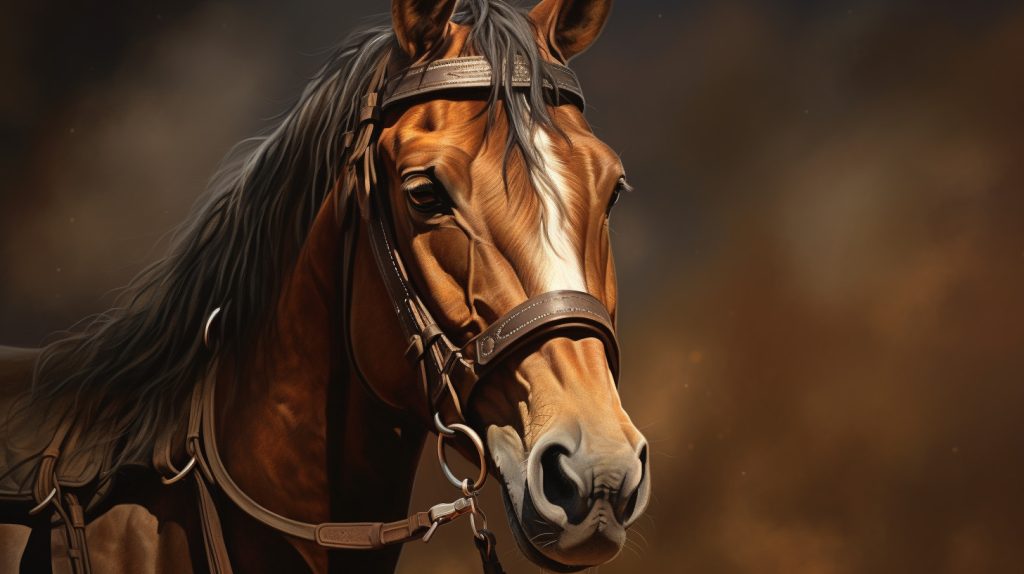
Lastly, it’s important to have patience and consistency in your training. Western dressage takes time and dedication to master. Celebrate small victories along the way and continue to strive for improvement.
Remember, its all about the partnership between horse and rider. With the right training and equipment, you can embark on a fulfilling journey of mastering this unique style of riding.
The Basic Movements
The basic movements are the foundation of this unique style of riding. These movements are designed to develop balance, flexibility, and responsiveness in the horse, while also enhancing the partnership between horse and rider.
One of the key movements is the free jog. This movement requires the horse to maintain a relaxed and rhythmic jog, with the rider allowing the horse to move freely forward. The goal is to achieve a natural and flowing movement that showcases the horse’s athleticism and willingness.
Another important movement is the lateral movement, such as the leg yield or sidepass. These movements require the horse to move sideways while maintaining forward momentum. Lateral movements help to improve the horse’s balance, suppleness, and responsiveness to the rider’s aids.
Transitions, such as walk to jog or jog to lope, are also fundamental movements. These transitions should be smooth and seamless, with the horse responding promptly to the rider’s cues.
In addition to these basic movements, Western style dressage riders may also practice circles, turns, and changes of direction. These exercises help to further develop the horse’s balance, coordination, and obedience to the rider’s aids.
It’s important for riders to familiarize themselves with the specific movements and exercises outlined in the Western dressage rules and guidelines. This will provide structure and goals for training sessions and help riders prepare for competitions.
Overall, mastering the basic movements requires patience, consistency, and dedication. With regular practice and proper training, riders can develop a strong foundation in this unique style of riding.
Common Challenges and How to Overcome Them
One common challenge that Western style dressage riders may encounter is finding the right tack for their horse. It’s important to ensure that the saddle, bridle, and accessories fit properly and are comfortable for both the rider and the horse. Ill-fitting tack can cause discomfort and hinder the horse’s movement and performance. To overcome this challenge, it’s recommended to consult with a professional or experienced Western dressage rider who can provide guidance on selecting the right tack for your specific needs.
Another challenge that riders may face is mastering the various movements and exercises. It can take time and practice to develop the balance, flexibility, and responsiveness required for these movements. One way to overcome this challenge is to work with a knowledgeable and experienced Western dressage trainer who can provide instruction and guidance. They can help break down the movements into manageable steps, offer feedback and corrections, and provide exercises and drills to improve specific areas.
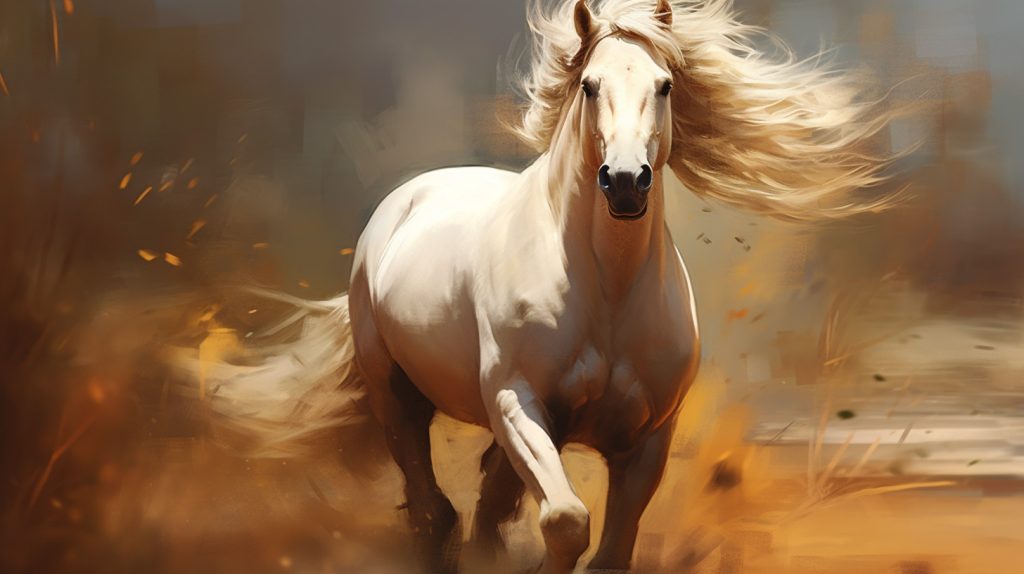
Additionally, some riders may struggle with maintaining consistency and motivation in their training. Dressage requires dedication and regular practice to see progress. To overcome this challenge, it can be helpful to set specific goals and create a training schedule. Breaking down larger goals into smaller, achievable milestones can help maintain motivation and track progress. Seeking out opportunities for clinics or lessons with experienced trainers can also provide inspiration and new perspectives on training.
By addressing these common challenges and seeking guidance from experienced professionals, dressage riders can overcome obstacles and continue to grow and improve in this unique style of riding.
Competing in Competitions
Competing in Western dressage is an exciting and rewarding opportunity to showcase your skills and progress in this unique style of riding. Whether you’re a seasoned competitor or new to the world of Western dressage, there are a few key aspects to consider when preparing for a competition.
First and foremost, familiarize yourself with the rules and guidelines of these competitions. These guidelines outline the specific movements, exercises, and tests that will be judged. Understanding these requirements will help you structure your training and ensure that you’re practicing the necessary elements.
Next, focus on fine-tuning your performance. Work with your trainer to identify any areas that need improvement and develop a training plan to address them. This may include practicing specific movements and exercises, refining your transitions, and improving your overall harmony with your horse.
In addition to training, it’s also important to have the right equipment. Ensure that your tack, including your saddle, bridle, and any accessories, is in good condition and fits properly. Ill-fitting tack can cause discomfort for both you and your horse, so take the time to make any necessary adjustments or replacements.
Consider participating in clinics or workshops specifically tailored to Western dressage. These events provide an opportunity to receive feedback from experienced judges and trainers, as well as learn from other riders. They can also be a great way to gain confidence and build camaraderie with fellow Western dressage enthusiasts.
Lastly, remember to have fun and enjoy the experience. Competing in Western dressage is about showcasing the partnership and connection between horse and rider. Embrace the opportunity to share your progress and passion for this style of riding with others.
is about showcasing the partnership and connection between horse and rider. Embrace the opportunity to share your progress and passion for this style of riding with others.
With proper training, preparation, and the right mindset, competing in dressage can be a rewarding and fulfilling experience. So, go out there and give it your all – you never know what you’re capable of until you try!
Resources for Learning More About Western Dressage
If you’re interested in learning more about Western dressage, there are several resources available to help you further your knowledge and skills in this unique style of riding.
One option is to attend a Western dressage clinic or workshop. These events are typically led by experienced trainers and instructors who specialize in this area of dressage. Clinics provide an opportunity to receive hands-on instruction, learn new exercises and techniques, and receive feedback on your riding. They often cover topics such as tack fitting, training exercises, and competition preparation.
Another resource is the Western Dressage Association (WDAA). This association is dedicated to promoting and developing the sport of Western dressage. They offer a variety of educational materials, including articles, videos, and training guides. The WDAA also hosts competitions and provides information on rules and guidelines for Western dressage. Becoming a member of the WDAA can provide you with access to additional resources, as well as opportunities to connect with other Western dressage enthusiasts.
Books and DVDs are also valuable resources for learning more about Western dressage. There are several authors and trainers who have published books and videos on this subject, offering in-depth instruction and guidance on training techniques, exercises, and competition preparation.
If you’re looking for a unique gift for a Western dressage enthusiast, consider a gift certificate for a Western dressage clinic or training session. This allows them to further their skills and knowledge under the guidance of an experienced instructor.
Overall, there are many resources available to help you learn more about Western dressage and enhance your skills as a rider. Whether you choose to attend a clinic, join an association, or invest in educational materials, the key is to stay curious and continue to seek out opportunities for learning and growth in this exciting discipline.
Western Dressage riders and trainers
Western dressage has gained a dedicated community of riders and trainers who are passionate about this unique style of riding. Many accomplished riders and experienced trainers have emerged in the Western dressage world, offering their expertise and knowledge to those looking to learn and improve their skills.
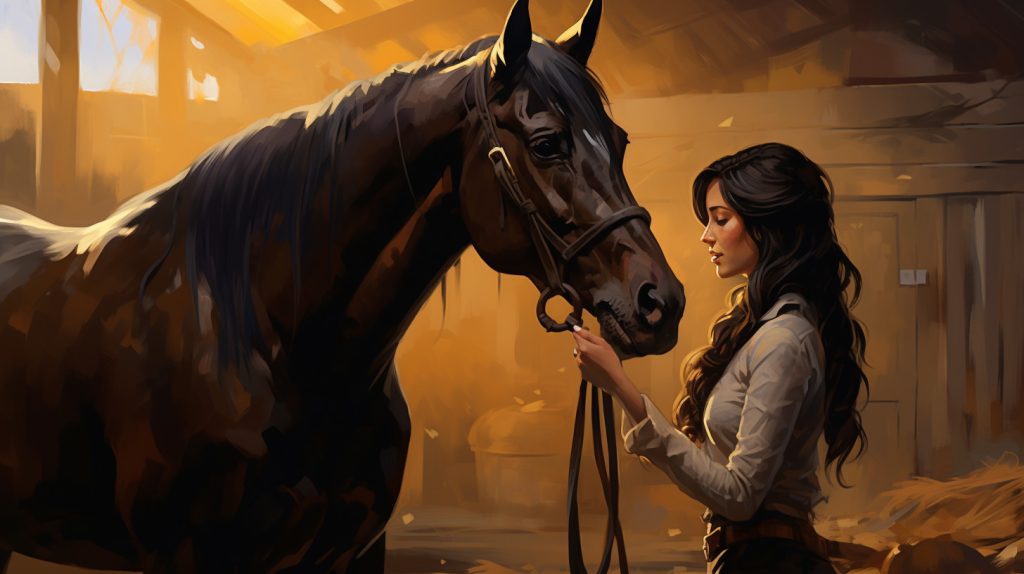
One prominent figure in the Western dressage community is Paula Paglia . As mentioned earlier, Paula played a significant role in establishing Western dressage as a recognized discipline. With her background in classical dressage and her commitment to bringing these principles to the Western riding community, Paula has become a respected trainer and advocate for Western dressage. She has hosted clinics and training programs specifically tailored to Western-style riders and horses, helping them develop the balance, flexibility, and responsiveness necessary for this style of riding.
. As mentioned earlier, Paula played a significant role in establishing Western dressage as a recognized discipline. With her background in classical dressage and her commitment to bringing these principles to the Western riding community, Paula has become a respected trainer and advocate for Western dressage. She has hosted clinics and training programs specifically tailored to Western-style riders and horses, helping them develop the balance, flexibility, and responsiveness necessary for this style of riding.
In addition to Paula Paglia, there are many other experienced trainers and riders who specialize in Western dressage. They offer a variety of resources, including clinics, lessons, and workshops, to help riders improve their skills and deepen their understanding of this discipline. These trainers can provide valuable instruction, feedback, and guidance on topics such as tack fitting, training exercises, and competition preparation.
Whether you’re a beginner or an experienced rider, seeking guidance from knowledgeable trainers and connecting with fellow Western dressage enthusiasts can greatly enhance your journey in mastering this style of riding. These trainers and riders can provide inspiration, support, and valuable insights to help you progress in Western dressage.
Conclusion
In conclusion, Western dressage offers a unique and exciting opportunity for riders to explore the art of horse dressage while embracing the Western riding tradition. This style of riding combines the principles of classical dressage with the attire and tack of Western-style riding, creating a harmonious partnership between horse and rider.
By incorporating the basic movements and exercises of Western dressage, riders can develop balance, flexibility, and responsiveness in their horses. Through patience, consistency, and dedication to proper training and equipment, riders can master this discipline and showcase their skills in competitions.
There are numerous resources available for those interested in learning more about Western dressage. From clinics and workshops led by experienced trainers like Paula Paglia to associations such as the Western Dressage Association, riders have access to valuable education, training, and opportunities to connect with fellow enthusiasts.
Whether you’re a beginner or an experienced rider, Western dressage provides a fulfilling and rewarding journey. So, if you’re interested in exploring this unique style of riding, don your Western attire, saddle up with the right tack, and embark on an adventure of mastering the art of Western dressage. Or if you are leaning more towards English Dressage then you should find out here.
Recent Posts
Mastering English Dressage: Tips and Techniques Complete Guide 101
Introduction English dressage is an equestrian sport that involves precise movements and commands between a dressage horse and its rider. It is a graceful, beautiful art form that requires skill...
Clash of Equestrian Cultures: Western vs English Dressage Complete Guide
Introduction The equestrian world is a diverse one, with many different styles of riding and cultures that are represented. One of the biggest clashes of cultures in the world of horses is between...
